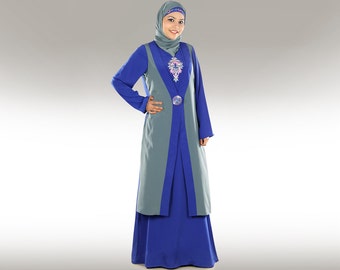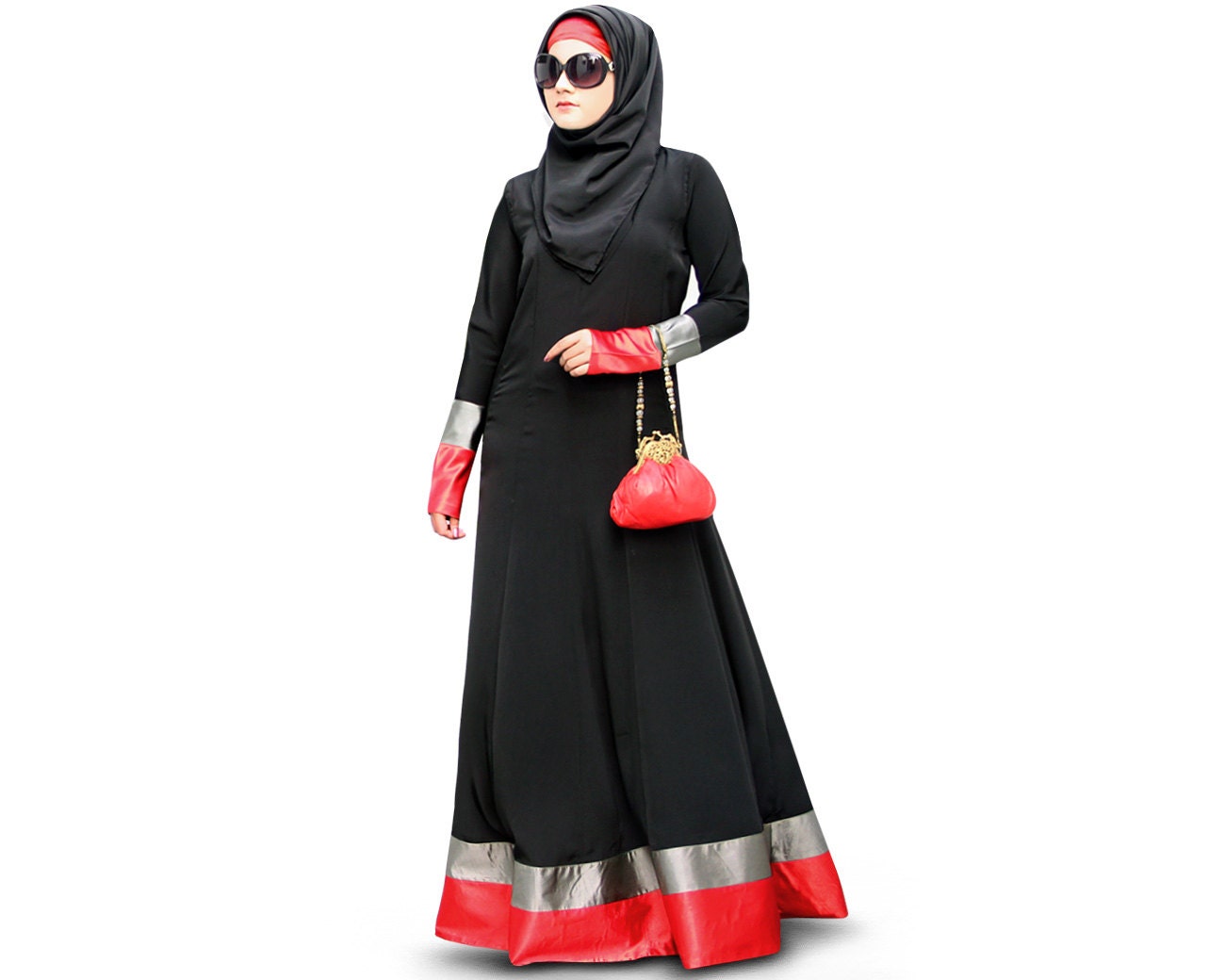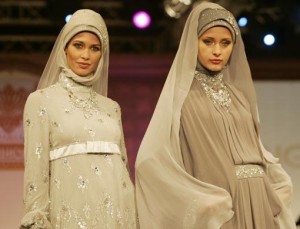About Burka Fashion
Source (google.com.pk)
It's our duty to keep update you regarding any latest fashion, and we are convincing people to change your lifestyle with upcoming trends. In the field of online fashion blog She-Styles have its own standard and our team is providing exclusive collections and quite convenient information. As we know spring season is just starting now and women are searching soft and colorful dresses which is suitable for spring summer days. Today we has brought Latest Abaya Styles 2014-2015 Collection in Pakistan. This is a chiffon abaya collection which is perfectly suitable for summer season. In these Islamic Abaya dresses the designer applied Khaleeji and Dubai abaya designs and techniques, these Saudi and Dubai abaya trends are very poplar in Pakistan.Pakistani young girls and office going ladies like these types of modern and trendy abaya. Furthermore in this Abaya collection 2014-15 you can see colorful abaya styles and traditional black color abaya designs. These Abaya / Burqa are nourished with thready embroidery, fancy embroidery work and applique designing.
A burka is an article of clothing worn as an outermost layer by women of certain Islamic traditions. The garment is worn over the attire that the wearer considers normal daily clothing, and is removed when the wearer returns to her home. This is primarily intended to prevent the woman's body and face from being seen in public, particularly by men who are not her husband or in her family. Wearing a burka can also be seen as a declaration of religious faith and sentiments, much like other forms of religious garb.
The garment itself is symbolic of a specific tradition, and criticisms of women who wear a burka are usually not about the garment itself, but about what it stands for. These garments are typically made of fabric that covers the whole body, which is pleated and attached to a skullcap. A slit or a mesh area is left around the eyes so that the wearer can see. Without much form fitting structure, the garment reveals little of even the human silhouette, such that no aspect of the form of the shoulders, torso, or legs is apparent.
Although black and blue are the most common burka colors in most of the world, the garment is occasionally seen in other colors. Burkas are embroidered in some traditions, and can be made of many different fabrics including cotton and silk. This garment should not be confused with other interpretations of hijab, many of which allow the face to be shown. While these other garments are also presentations of an Islamic woman's call to modesty, they are considered a different class of clothing.
Burkas have become highly politicized items of clothing from many standpoints, both within the Muslim community and in non-Islamic contexts. Opponents to this tradition claim that burkas are oppressive to women, and that they not only represent but also cause this oppression. They are often in favor of banning them, particularly for young women in school.
Both male and female supporters of the garment claim that wearing it is a right, one that should not be taken away by purportedly secular sources. There are abundant testimonies of Muslim women who assert that they are not oppressed and that they choose to wear burkas, and these are often used to support the position that these clothes are not enforcing sexism.
In some countries of Islamic tradition, such as areas in Afghanistan and Pakistan, women have been compelled by certain groups to wear full burkas in the face of severe penalties. The Taliban, for instance, has been an enforcer of burkas, along with other measures to aggressively protect the chastity of women. While the clothing itself may not be oppressive, there are certainly cases such as this in which the garment has been used as a tool to oppress women.
Burka Fashion Abaya Designs 2014 Dress Collection Dubai Styles Fashion Pics Photos Images Wallpapers

Burka Fashion Abaya Designs 2014 Dress Collection Dubai Styles Fashion Pics Photos Images Wallpapers
Burka Fashion Abaya Designs 2014 Dress Collection Dubai Styles Fashion Pics Photos Images Wallpapers

Burka Fashion Abaya Designs 2014 Dress Collection Dubai Styles Fashion Pics Photos Images Wallpapers

Burka Fashion Abaya Designs 2014 Dress Collection Dubai Styles Fashion Pics Photos Images Wallpapers
Burka Fashion Abaya Designs 2014 Dress Collection Dubai Styles Fashion Pics Photos Images Wallpapers

Burka Fashion Abaya Designs 2014 Dress Collection Dubai Styles Fashion Pics Photos Images Wallpapers

Burka Fashion Abaya Designs 2014 Dress Collection Dubai Styles Fashion Pics Photos Images Wallpapers

Burka Fashion Abaya Designs 2014 Dress Collection Dubai Styles Fashion Pics Photos Images Wallpapers

Burka Fashion Abaya Designs 2014 Dress Collection Dubai Styles Fashion Pics Photos Images Wallpapers

Burka Fashion Abaya Designs 2014 Dress Collection Dubai Styles Fashion Pics Photos Images Wallpapers

Burka Fashion Abaya Designs 2014 Dress Collection Dubai Styles Fashion Pics Photos Images Wallpapers

Burka Fashion Abaya Designs 2014 Dress Collection Dubai Styles Fashion Pics Photos Images Wallpapers

Burka Fashion Abaya Designs 2014 Dress Collection Dubai Styles Fashion Pics Photos Images Wallpapers

Burka Fashion Abaya Designs 2014 Dress Collection Dubai Styles Fashion Pics Photos Images Wallpapers

Burka Fashion Abaya Designs 2014 Dress Collection Dubai Styles Fashion Pics Photos Images Wallpapers

Burka Fashion Abaya Designs 2014 Dress Collection Dubai Styles Fashion Pics Photos Images Wallpapers

Burka Fashion Abaya Designs 2014 Dress Collection Dubai Styles Fashion Pics Photos Images Wallpapers

Burka Fashion Abaya Designs 2014 Dress Collection Dubai Styles Fashion Pics Photos Images Wallpapers

Burka Fashion Abaya Designs 2014 Dress Collection Dubai Styles Fashion Pics Photos Images Wallpapers

Burka Fashion Abaya Designs 2014 Dress Collection Dubai Styles Fashion Pics Photos Images Wallpapers

Burka Fashion Abaya Designs 2014 Dress Collection Dubai Styles Fashion Pics Photos Images Wallpapers

No comments:
Post a Comment